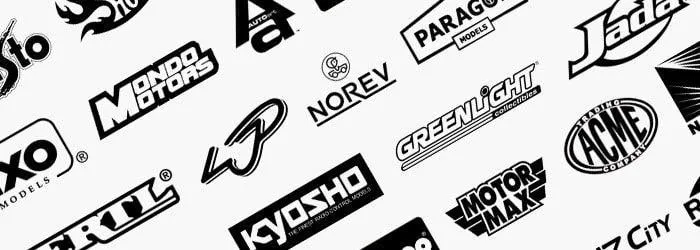What is Diecast Modeling
Diecast modeling refers to the creation of miniature models using the diecasting process. These models replicate vehicles, aircraft, and other objects with remarkable detail. The popularity of diecast models stems from their accuracy, durability, and collectibility. They serve as both toys and valuable collectibles, attracting enthusiasts of all ages. The diecasting process allows for intricate designs and high levels of detail, making these models highly sought after. The term ‘diecast’ itself provides a crucial clue to its origins and the method of production. Understanding the etymology of ‘diecast’ provides a deeper appreciation for these fascinating miniatures and the history of their manufacture.
The ‘Die’ in Diecast
The ‘die’ in diecast refers to the specialized tool or mold used in the manufacturing process. This mold, typically made of steel, is meticulously crafted to create the desired shape of the model. The die consists of two halves that fit together precisely, forming a cavity into which molten metal is injected under high pressure. The precision of the die is critical as it determines the accuracy and detail of the finished model. These dies can be complex, often requiring multiple components to accommodate intricate designs, such as engine parts, windows, and other detailed features. The use of a die ensures consistent and efficient production of the models. The word ‘die’ directly relates to the unique manufacturing technique employed in creating these models.
Origins of Diecasting

The diecasting process has a rich history, originating in the late 19th century. The earliest forms of diecasting were developed for applications like printing and the production of small, intricate metal parts. Early diecasting techniques relied on gravity to fill the molds with molten metal. However, the introduction of high-pressure diecasting significantly revolutionized the process, allowing for greater precision and the use of more complex designs. The advancements in metallurgy also played a crucial role, enabling the use of various alloys, expanding the range of possible applications. The evolution of diecasting technology is a testament to human innovation and the continuous pursuit of efficient and accurate manufacturing methods. The etymological root of the word reveals the process’s evolution.
The ‘Cast’ in Diecast
The word ‘cast’ in diecast refers to the fundamental act of pouring molten metal into a mold, allowing it to solidify into the desired shape. In the diecasting process, this ‘casting’ is done under high pressure to ensure the metal fills every detail of the die. The casting process is critical for producing complex parts with high dimensional accuracy. The molten metal, typically an alloy of zinc, aluminum, or other metals, is injected into the die, filling the cavity, and then cooled rapidly. This rapid cooling helps maintain the shape and detail of the model. The casting process is a core element of diecast model production, it’s the origin of the name.
Early Usage of Diecasting
Diecasting found early applications in industries requiring the mass production of intricate metal parts. The technology was initially used to create components for machinery, tools, and other industrial products. As the process improved, diecasting became more prevalent in the toy industry, enabling the production of detailed and durable miniature vehicles. This shift marked a significant step in the evolution of diecasting. Early diecast models were simpler in design, as the technology matured, manufacturers could achieve higher levels of detail. The early applications of diecasting highlight its versatility and its ability to transform various industries. The etymological origins reflect on this early use of the diecasting methods.
Materials Used in Diecast

The materials used in diecast models are critical to their quality, durability, and appearance. The most common materials are zinc alloys and aluminum alloys. These alloys offer the right combination of strength, castability, and cost-effectiveness. The choice of material affects the weight, finish, and overall feel of the model. The selection of appropriate materials allows for intricate detailing and the ability to reproduce various textures and features. Understanding the materials used provides insight into the engineering that goes into these models. These materials are poured into the die during the ‘casting’ part of the process, as reflected in the word’s etymology.
Zinc Alloys
Zinc alloys are a popular choice for diecast models due to their excellent castability and ability to capture fine details. They offer good mechanical properties, including strength and corrosion resistance. Zinc alloys provide a smooth surface finish that is ideal for painting and decoration. They are relatively inexpensive and readily available, making them a preferred material for mass production. The use of zinc alloys has played a significant role in the growth of the diecast model industry. They enable manufacturers to achieve a high level of detail and quality. Zinc alloys are poured into the die during casting.
Aluminum Alloys
Aluminum alloys are another material widely used in diecast models. They are known for their lightweight properties and excellent strength-to-weight ratio. Aluminum alloys offer good thermal conductivity, which facilitates the rapid cooling required in the diecasting process. These alloys provide a high-quality surface finish and are resistant to corrosion. The use of aluminum alloys allows for the production of models with intricate designs and complex geometries. These characteristics have made aluminum alloys a staple in high-end diecast models, providing a premium feel and appearance. Aluminum alloys are also used in the casting process.
Diecast’s Evolution

The diecast industry has experienced significant evolution since its inception. Early diecast models were simple in design and construction. However, as technology advanced, so did the complexity and detail of these models. The introduction of high-pressure diecasting, precision tooling, and advancements in materials science have all contributed to this evolution. Today’s diecast models feature intricate designs, realistic details, and high levels of accuracy. The development of new materials and manufacturing techniques continues to drive the industry forward. The advancements in diecast modeling mirror the evolution of manufacturing technologies, the diecasting methods changed over time.
How Diecast Models are Made
The manufacturing process for diecast models involves several key steps. First, the die is created, which is a complex mold. Next, the molten metal alloy is injected into the die under high pressure. The metal is then allowed to cool and solidify. The die is opened, and the newly formed model is ejected. After ejection, the model undergoes finishing processes, such as trimming excess material, polishing, and painting. Detailed parts are often added, and finally, the model is assembled and packaged for sale. Throughout the process, quality control checks are performed to ensure accuracy and quality. The entire process is designed for efficiency and precision.
The Future of Diecast
The diecast industry continues to evolve, with promising developments on the horizon. Advancements in 3D printing are opening new possibilities for creating complex die designs and prototyping. The use of advanced materials and coatings could lead to improved durability and realism in the models. The increasing use of digital technology in design and manufacturing enables more precise and detailed models. The trend toward collectibility and personalization will continue to drive demand for unique and limited-edition models. The future of diecast looks bright, with innovation and passion for the hobby shaping the industry.
Conclusion

Understanding the etymology of ‘diecast’ unveils more than just the definition of the term; it provides a deeper insight into the manufacturing process and the history of these miniature models. From the earliest applications of diecasting to the intricate designs of modern collectibles, the evolution of diecast reflects advances in technology and manufacturing. The ‘die’ and the ‘cast’ are the core elements of these model’s history and manufacturing. The fascinating journey of diecast models, starting from the molten metal and ending in the detailed miniature, reflects ingenuity and passion for detail. Diecast models are a testament to the precision and artistry that go into creating these miniature masterpieces.
